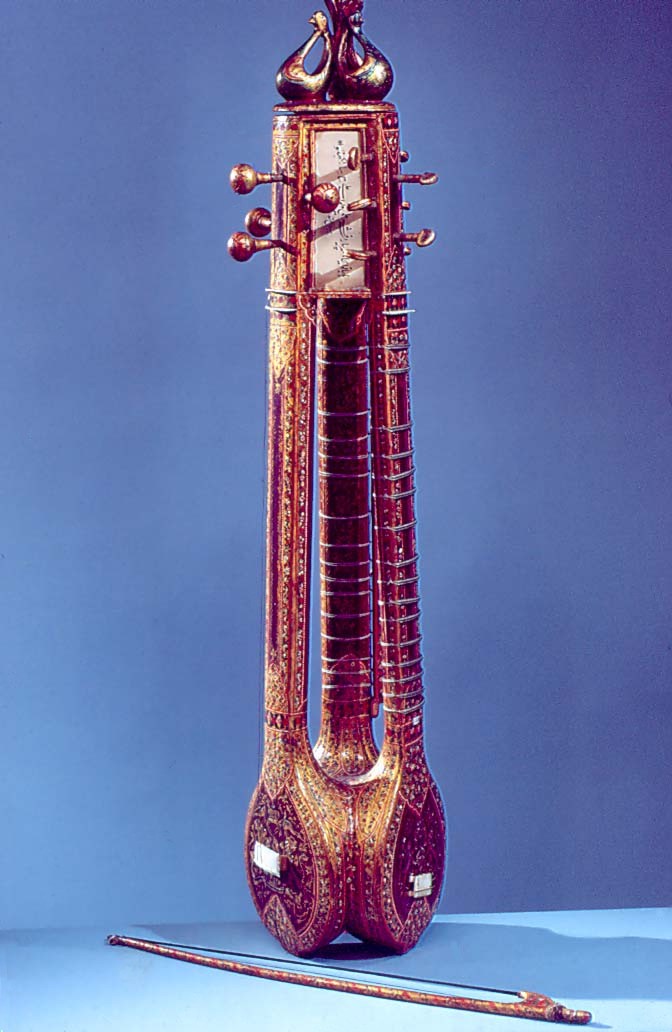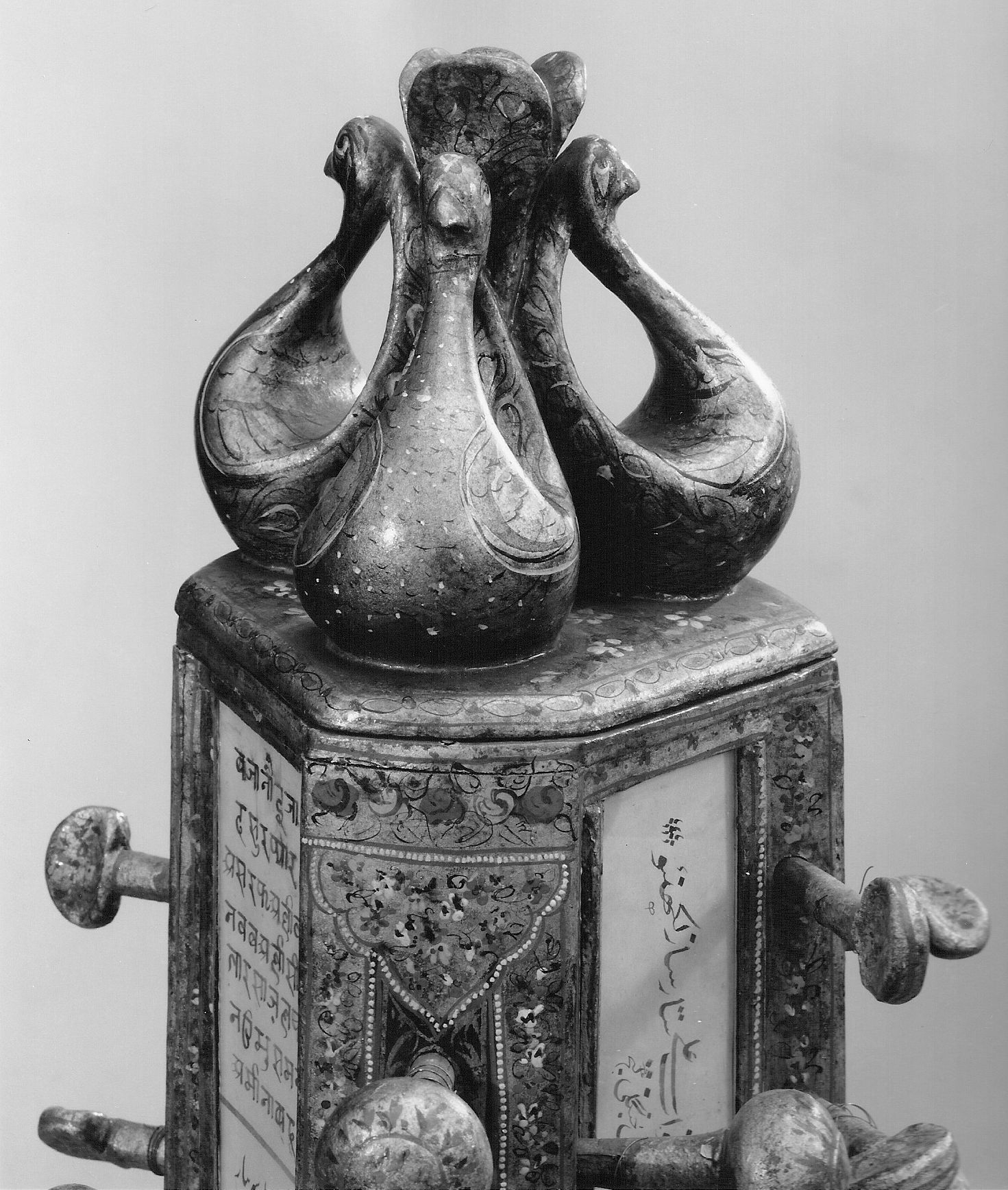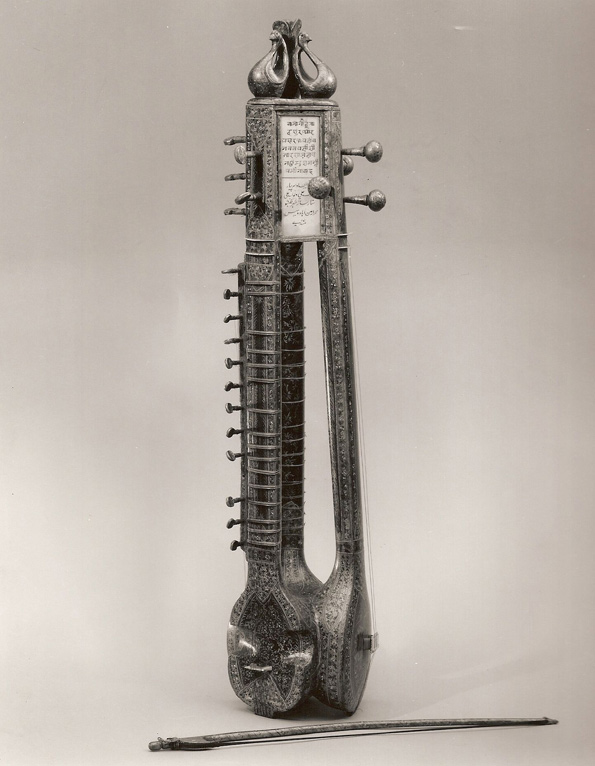Sūr pyār (Compound Sitar, Tambura, Esraj)
Not on view
This novelty instrument consists of a tāmbūra, sitār, and esrāj joined together at the base and peg box. Coined the “sūr pyār” or “lovely sound” by its inventors, Ashraf Ali and Nawab Ali, it demonstrates innovation in Indian instrument making in the 19th century. Labels on the three sides of the instrument are in English, Urdu, and Hindi. The presence of the three languages on a single instrument points to the multicultural cosmopolitanism of Lucknow at the time, as well as the diverse clientele of musical instrument makers. Notably, the esrāj features sympathetic strings, while the sitār does not.
Due to rights restrictions, this image cannot be enlarged, viewed at full screen, or downloaded.
This artwork is meant to be viewed from right to left. Scroll left to view more.





